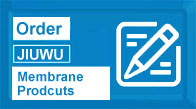Tubular ceramic membranes, as an emerging membrane separation technology in recent years, have gradually occupied an important position in many industries such as food, pharmaceuticals, chemicals, and environmental protection due to their unique performance and wide range of applications. This article will start from the preparation process of tubular ceramic membranes, and discuss in detail their characteristics and their applications in various fields.
The preparation of tubular ceramic membranes is a complex and meticulous process, mainly including raw material selection, body preparation, forming, sintering, trimming, membrane formation, baking, and packaging, among other key steps.
Raw Material Selection
The performance of tubular ceramic membranes largely depends on the quality of the raw materials. Commonly used raw materials include high-purity powder materials such as alumina, zirconia, titanium oxide, and silicon carbide. These materials need to be strictly screened and processed to ensure their purity and uniformity in particle size.
Body Preparation
The selected powder materials are mixed in a certain proportion, and a suitable amount of organic glue and stabilizers are added. The mixture is stirred uniformly to obtain a body for forming. The key to this step is to control the dispersion of the powder particles and the plasticity of the body to ensure smooth subsequent forming.
Forming
The body is shaped according to the preset shape and size, such as a tubular form. Forming methods include extrusion forming, injection molding, etc., and the appropriate forming process should be chosen based on specific requirements and equipment conditions.
Sintering
The formed body is subjected to sintering at high temperatures to bond the powder particles into a hard ceramic body. The sintering temperature and time must be strictly controlled to avoid cracking or deformation of the body.
Trimming and Membrane Formation
The sintered ceramic body may have some defects or uneven areas that need to be trimmed. Subsequently, a specific chemical method is used to create nanoporous structures on the surface of the ceramic body, a process known as membrane formation. This step is crucial in the preparation of tubular ceramic membranes, directly impacting the separation performance and stability of the membrane.
Baking and Packaging
The membrane-formed tubular ceramic membrane is subjected to baking under specific conditions to improve its physical and chemical stability. Finally, packaging is performed to protect its integrity and extend its service life.
Tubular ceramic membranes demonstrate significant advantages in various fields due to their unique structure and performance characteristics.
Efficient and Stable Separation Performance
Tubular ceramic membranes have a nanoporous pore distribution and uniform pore structure, enabling efficient separation effects. Additionally, their good chemical stability, acid and alkali resistance, and organic solvent resistance allow them to maintain stable separation performance even in harsh environments.
High Strength and Long Service Life
Made from inorganic ceramic materials, tubular ceramic membranes exhibit high mechanical strength and wear resistance. Moreover, their strong anti-pollution capability and good regeneration performance result in a long service life, reducing maintenance and replacement costs.
Wide Range of Applications
Tubular ceramic membranes are widely used in various fields such as food, pharmaceuticals, chemicals, and environmental protection. In the food industry, they can be used for juice clarification, milk sterilization, and other processes; in the pharmaceutical industry, they can be used for drug purification and separation; in the chemical industry, they can be used for the separation and purification of chemical reactions; in the environmental field, they can be used for wastewater treatment and air purification.
Low Energy Consumption and Environmental Protection
The separation process of tubular ceramic membranes employs a cross-flow filtration method, where the feed liquid flows rapidly inside the membrane tube, resulting in low energy consumption during the separation process. Furthermore, their good chemical stability and strong anti-pollution ability reduce the use of chemical agents and wastewater discharge, meeting environmental protection requirements.
As a high-efficiency, stable, and corrosion-resistant filtration technology, tubular ceramic membranes showcase broad application prospects and potential in various fields. With the continuous improvement of preparation processes and the expansion of application fields, tubular ceramic membranes are expected to play a more significant role in future developments. Meanwhile, attention should also be paid to environmental issues during their preparation process, striving to achieve green preparation and sustainable development.




 +86-25-58849045
+86-25-58849045
 +86-25-58749295
+86-25-58749295
 jiuwu@jiuwu.com
jiuwu@jiuwu.com
 No. 9 Park Road, Pukou District, Nanjing City (Sanqiao Factory)
No. 9 Park Road, Pukou District, Nanjing City (Sanqiao Factory) Call us on:
Call us on:  Email Us:
Email Us:  No. 9 Park Road, Pukou District, Nanjing City (Sanqiao Factory)
No. 9 Park Road, Pukou District, Nanjing City (Sanqiao Factory)

 English
English 한국어
한국어 français
français русский
русский Español
Español
